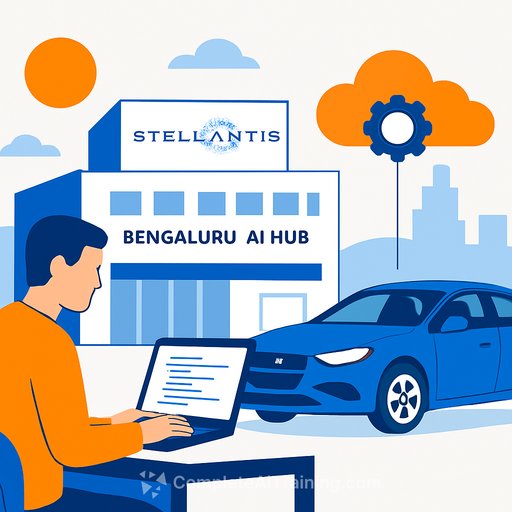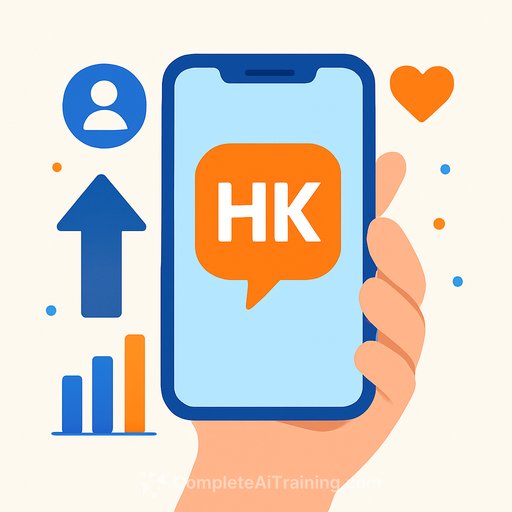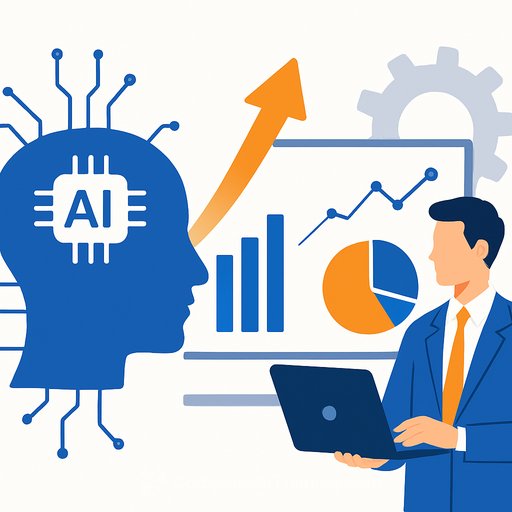How Stellantis Is Using AI to Build Cars Faster and Smarter
Stellantis is leaning hard into practical AI across design, engineering and customer experience. Its Bengaluru Technology Centre is the engine room, treating AI as a multiplier for expert teams-not a replacement.
The approach is simple: two connected tracks. One improves the in-car experience through an AI assistant. The other inserts AI across simulation, design, validation and optimisation to compress time-to-market.
The two-track plan: CX and engineering
On the customer side, the in-car assistant-known as Cara in India-handles queries today and is being tested for early diagnostics. Think analysing noises or defects and flagging what needs attention. That work is still in the lab, but the direction is clear: faster triage, less guesswork.
On the engineering side, AI is being applied end-to-end. The goal is aggressive: bring new products to market in under two years, even as platforms get more complex. Bengaluru sits at the centre of that push.
Teams, skills and scale
Stellantis has roughly 4,000 people in engineering across India. Over 1,000 are at the Bengaluru Technology Centre, with an average age of 34 and more than 10 years of experience. Additional centres operate in Chennai, Pune and Hyderabad.
Headcount isn't shrinking. Leaders argue AI only works in the hands of people with deep domain knowledge-engines, aerodynamics, materials, software. With the right tools, they're seeing 2x to 10x output from the same teams.
Training that sticks
The company is investing heavily in upskilling. External experts are brought in, and internal AI communities run workshops, jams and knowledge-sharing cohorts. The expectation: AI becomes as routine as email did over time.
Teams also run "blue sky sessions" where constraints are removed first. Then AI is used to map the shortest path from idea to something buildable.
Architecture choices that speed delivery
Cara runs on a super-modular architecture. Voice models, reasoning engines, data stores and interaction layers can be swapped independently. That lets teams upgrade individual modules as the market shifts without a full rewrite.
Modularity also controls cost. If a lower-cost model matches performance, they can replace it without touching the rest of the stack-or the customer experience. Cara was conceptualised and built in India and now ships globally.
Partnering to move faster
Stellantis and Mistral AI have been integrating advanced models across customer, business and engineering workflows for two years. In October, the partnership expanded into a strategic alliance to embed AI deeper into global operations. Learn more about Mistral's models on their site: Mistral AI.
What product development leaders can copy
- Split your roadmap: one track for customer experience, one for engineering acceleration. Keep both aligned through shared metrics.
- Adopt modular AI: isolate voice, reasoning, data and UX layers with clean interfaces so you can swap models in days, not months.
- Go simulation-first: run high-volume virtual tests, then validate physically. Track your sim-to-physical ratio and aim to push it higher.
- Keep humans in the loop: set approval gates for safety-critical decisions and certify models per subsystem, not just at the program level.
- Benchmark models quarterly: performance and costs shift fast. Build a procurement playbook that compares quality, latency and total cost.
- Invest in data loops: log edge cases from the field (e.g., audio anomalies), label quickly, and retrain models on a regular cadence.
- Build internal AI communities: short, recurring workshops beat one-off training. Incentivise demos, playbooks and knowledge reuse.
- Measure what matters: cycle time per phase, design iteration count, defect escape rate, inference cost per vehicle, and module swap time.
India footprint and product context
Stellantis runs 14 global brands, including Jeep, Citroën, Fiat, Peugeot, Opel, Maserati, Chrysler and Dodge. In India it retails Jeep, Citroën and Maserati, backed by three plants: Ranjangaon (Jeep and powertrains, plus a JV), Thiruvallur (Citroën), and Hosur (global export hub for engines and transmissions). That footprint gives the engineering teams a real-world testbed for fast iteration.
Key signals to track
- Development cycle under 24 months per new product
- Higher simulation-to-physical test ratio with stable quality outcomes
- Module swap time measured in days, not quarters
- Cost per inference trending down without loss in accuracy
- Diagnostic triage accuracy for in-car assistant features
- Training participation and reuse of internal AI playbooks
If your team is building similar capability
Upskilling is the fastest unlock. If you're setting up internal cohorts or role-based training for engineers, PMs and quality leads, these resources can help: AI courses by job role.
Your membership also unlocks:





